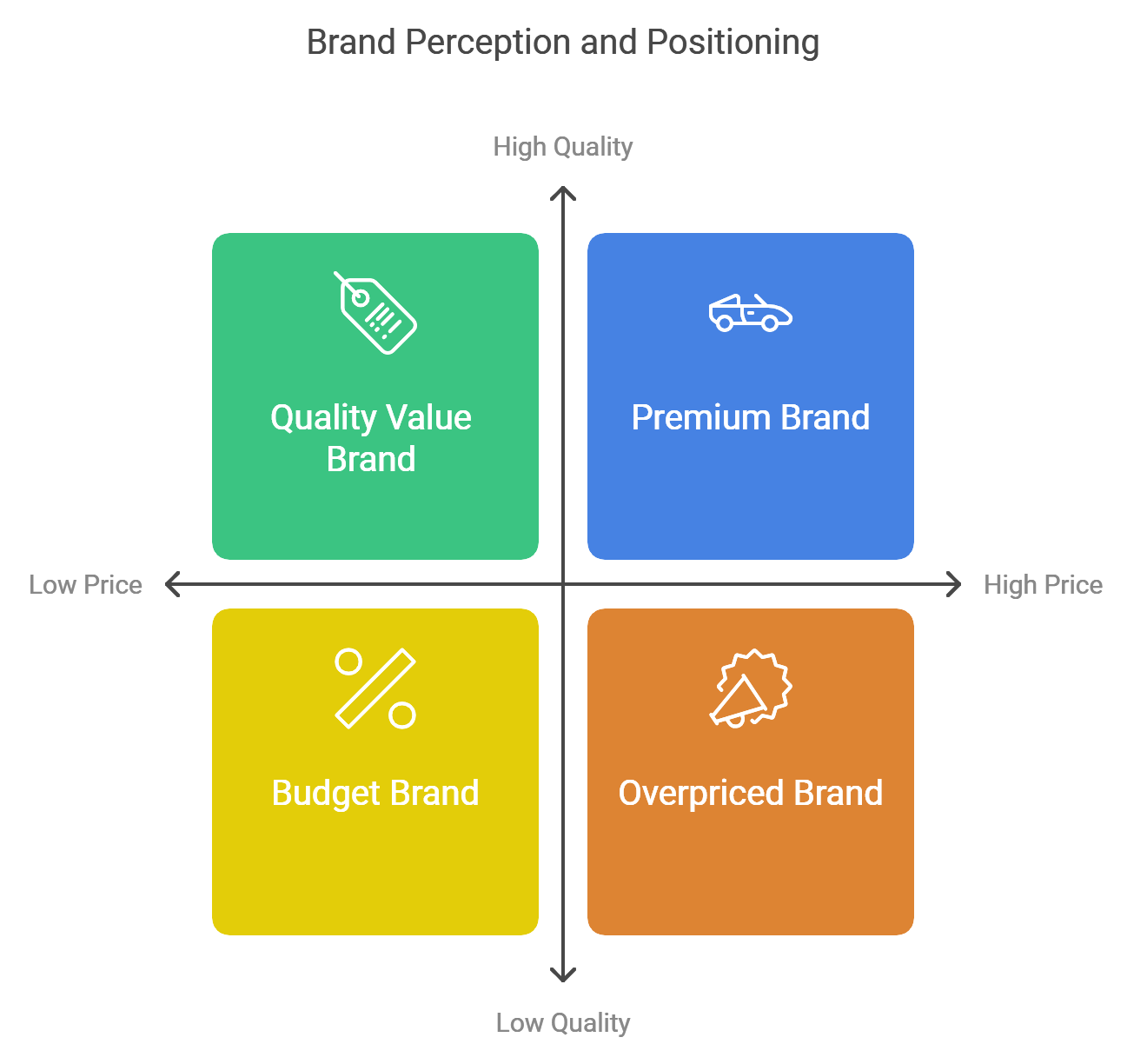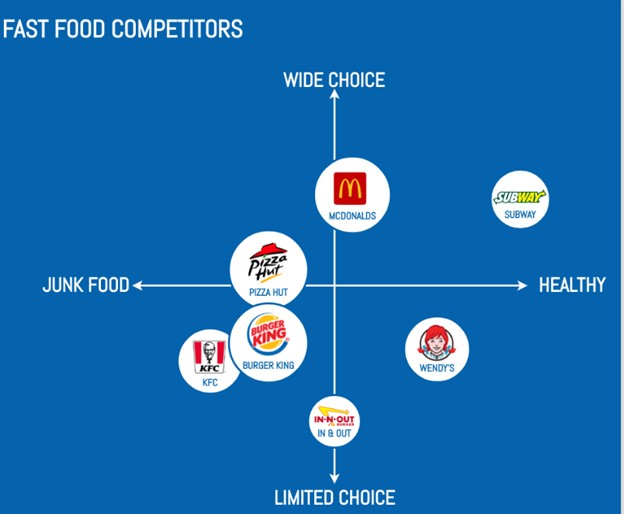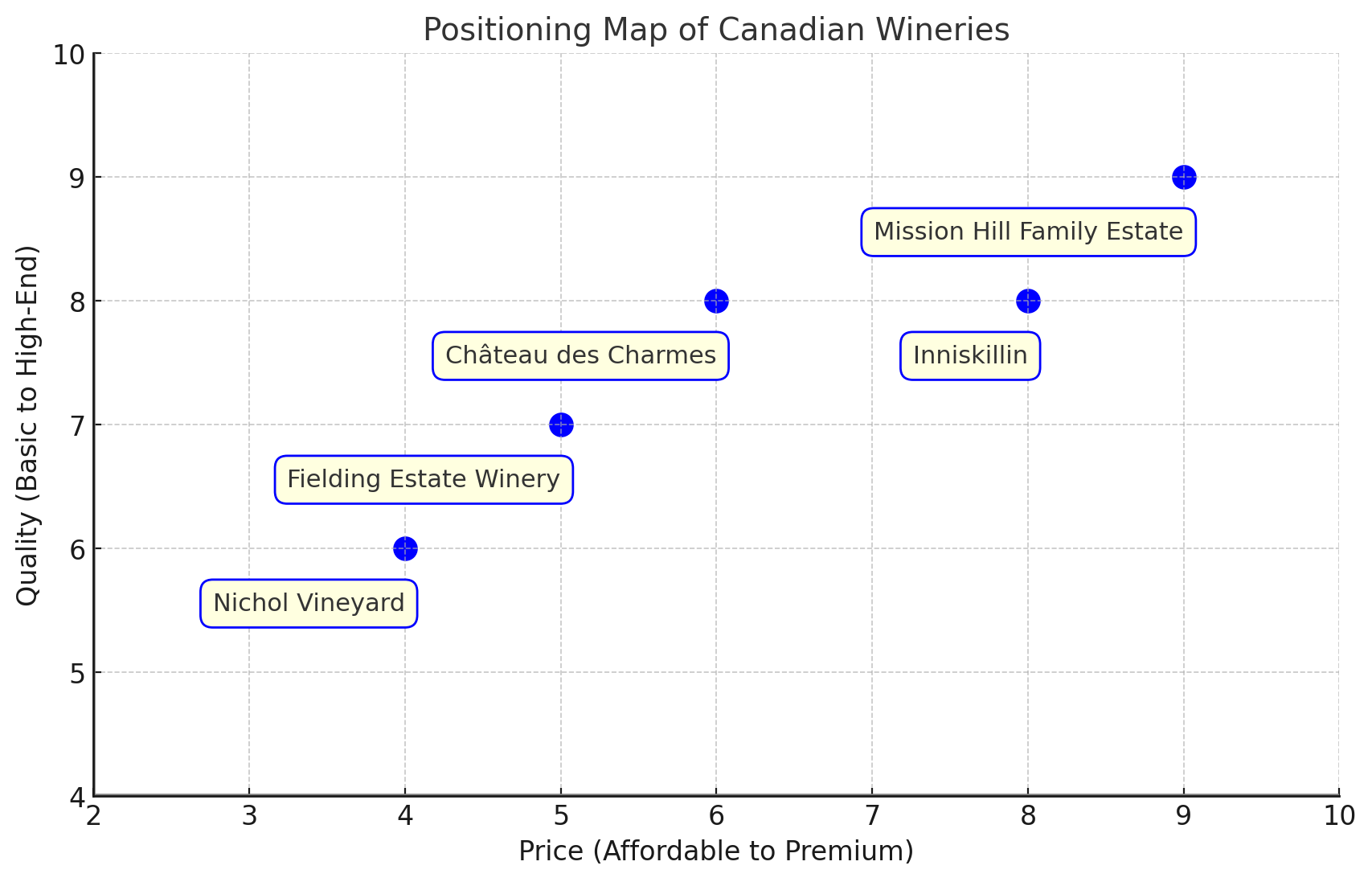Mapping the Market: Segmentation, Targeting, and Positioning
Differentiation and Positioning
After identifying and targeting specific market segments, the next step is to understand how businesses can effectively stand out within their chosen segments. This is where differentiation and positioning come into play. Differentiation and positioning are two closely related concepts in marketing that work together to help establish an offering’s “identify” in the marketplace.
Differentiation involves identifying unique attributes of a product or service that set it apart from competitors. It is about creating a perceived uniqueness in the minds of the target audience. For example, a company might differentiate itself by offering superior quality, innovative features, or exceptional customer service.
Positioning involves determining the “place” an offering should occupy in a given market relative to other customer alternatives. It is not just about the physical attributes of a product but also involves the perception and emotional connections that consumers have with the offering.
Differentiation and positioning are interdependent. Effective positioning relies on clear differentiation to communicate why a product is unique and valuable. Conversely, differentiation efforts are guided by the desired position a brand seeks to occupy in the market.
Both concepts are aimed at specific target segments. Differentiation highlights the unique benefits that matter most to the target audience, while positioning ensures these benefits are clearly communicated and understood.
Together, differentiation and positioning create a compelling value proposition that answers why consumers should choose one brand over another.
Positioning Process and Strategies
The positioning process involves several steps that help an organization establish a strong and distinct position for its offering in the minds of its target market.
The key steps in the positioning process are:
- Understand market dynamics.
- Identify competitive advantages.
- Choose competitive advantages.
- Define your positioning strategy.
- Communicate and deliver on the positioning strategy.
- Measure and evaluate.
Below you can find an overview of each step.
1. Understand Market Dynamics
What: Gain a comprehensive understanding of the market, including the target audience, competitive landscape, and key trends.
How: Conduct market research to identify the needs and preferences of your target segment and understand how competitors are positioned.
Examples
Using Perceptual Mapping to Understand Market Dynamics
Perceptual mapping[1][2] is a marketing research technique used to visually represent how consumers perceive different brands or products in relation to one another. This tool is important for positioning as it helps businesses understand their current market position and identify opportunities for differentiation.


2. Identify Competitive Advantages
What: Determine what makes your product or brand unique compared to competitors.
How: Analyze your product’s features, benefits, and unique selling propositions (USPs) to identify areas where you can differentiate.
A unique selling proposition (USP) is a marketing concept that defines the specific benefits and features that makes an offering distinct and superior to its competitors.
Examples
USPs of Canadian Wineries
| Winery | USP | Characteristics That Make the USP Effective |
|---|---|---|
| CedarCreek Estate Winery (BC) | “Sustainable Winemaking: Certified organic wines crafted to reflect the unique terroir of the Okanagan Valley.” |
|
| Inniskillin (Ontario) | “Pioneers of Icewine: Globally recognized for award-winning Icewines made from frozen grapes.” |
|
| Quails’ Gate Winery (BC) | “Family-Owned Legacy: Three generations crafting premium wines with a focus on Pinot Noir and Chardonnay.” |
|
| 13th Street Winery (Ontario) | “Where Wine Meets Art: Award-winning wines paired with an onsite bakery, culinary store, and contemporary art gallery.” |
|
3. Choose Competitive Advantages
What: Select the most compelling competitive advantages that will define your market niche.
How: Evaluate the identified advantages and choose those that align best with your target audience’s needs and your overall business goals.
4. Define Your Positioning Strategy
What: Develop a clear and concise positioning strategy that communicates your unique value proposition.
A unique value proposition (UVP) is a clear statement that articulates the overall value a product or service offers to its customers, setting it apart from competitors. It encompasses both functional and emotional benefits, addressing how the product improves the consumer’s life or solves a problem. UVPs are broader than USPs and include a wider range of benefits and value that a product or service offers. While the USPs focus on specific, tangible benefits that drive immediate sales, UVPs provide a broader context for why those benefits matter in the long term.
How: Craft a positioning statement that outlines your target market, category, differentiation, and the payoff for the customer.
A positioning statement is a concise description that defines how an offering uniquely fulfills a specific consumer need, distinguishing it from competitors.
Examples
Positioning Statements of Canadian Wineries
| Winery | Positioning Statement | Explanation |
|---|---|---|
| CedarCreek Estate Winery (BC) | “For wine enthusiasts who value sustainability and craftsmanship, CedarCreek Estate Winery offers premium organic wines that reflect the unique terroir of the Okanagan Valley, complemented by an immersive dining and tasting experience.” |
|
| Inniskillin (Ontario) | “As Canada’s original estate winery, Inniskillin is the trusted pioneer of Icewine, offering globally acclaimed, award-winning wines that showcase the best of Canadian winemaking heritage and innovation.” |
|
| Quails’ Gate Winery (BC) | “For those seeking world-class wines and unforgettable experiences, Quails’ Gate Winery combines exceptional winemaking expertise with breathtaking views and farm-to-table dining in the heart of the Okanagan Valley.” |
|
| 13th Street Winery (Ontario) | “13th Street Winery blends exceptional Niagara wines with art, food, and hospitality, creating a unique destination where guests can relax, discover, and enjoy a multi-sensory experience inspired by local terroir and creativity.” |
|
5. Communicate and Deliver on the Positioning Strategy
What: Ensure that your positioning strategy is effectively communicated and consistently delivered across all marketing channels.
How: Implement marketing campaigns, adjust your marketing mix, and ensure that all customer interactions (touchpoints) reflect your positioning strategy.
6. Measure and Evaluate
What: Continuously assess the effectiveness of your positioning strategy and adjust as needed.
How: Monitor customer perceptions, market trends, and competitive actions to ensure your positioning remains relevant and effective.
Examples
Successful Positioning Strategies of Canadian Wineries
| Winery | Positioning Strategy | Explanation | Key Takeaways |
|---|---|---|---|
| Inniskillin (Ontario) | Positioned as the pioneer of Icewine, emphasizing its legacy and global recognition for award-winning Icewines. | Inniskillin leverages its history as Canada’s first estate winery and its expertise in Icewine production. This positions it as a premium and innovative brand, appealing to both domestic and international wine enthusiasts. | Focuses on heritage and innovation, establishing itself as the leader in Icewine production, appealing to prestige-seeking customers worldwide. |
| Mission Hill Family Estate (BC) | Positioned as a luxury destination winery, offering breathtaking views of the Okanagan Valley, exclusive wines, and an immersive visitor experience. | The winery combines architectural beauty, scenic surroundings, and premium wines to create a high-end brand image. Its limited Terroir Collection further reinforces exclusivity and appeals to affluent wine connoisseurs. | Combines luxury, exclusivity, and experiential tourism, targeting affluent visitors seeking premium wines and memorable experiences. |
| Château des Charmes (Ontario) | Positioned as a winery rooted in heritage and craftsmanship, led by a fifth-generation French winegrower producing premium wines in Niagara-on-the-Lake. | By emphasizing its cool-climate terroir and family legacy, Château des Charmes appeals to wine lovers who value tradition, quality, and the unique characteristics of Niagara wines. | Highlights family legacy and craftsmanship, appealing to tradition-focused wine enthusiasts who value authenticity and high-quality cool-climate wines. |
| Nichol Vineyard (BC) | Positioned as an artisan winery focused on terroir-driven wines, with all grapes grown within 900 metres of the winery in the Naramata Bench region. | Nichol Vineyard highlights its small-scale production, unique Syrah vineyard (the first in Canada), and proximity to the stunning Okanagan Lake. This appeals to eco-conscious and boutique wine enthusiasts seeking authenticity. | Appeals to boutique wine lovers by emphasizing small-scale production, terroir-driven practices, and eco-conscious values for an authentic experience. |
| Fielding Estate Winery (Ontario) | Positioned as a modern yet approachable winery, offering premium wines with stunning views of the Toronto skyline from its Niagara Peninsula location. | Fielding Estate combines high-quality winemaking with a welcoming atmosphere, appealing to both casual visitors and wine connoisseurs. Its focus on Cabernet Sauvignon highlights its expertise in red winemaking. | Balances premium winemaking with accessibility, creating a welcoming atmosphere that appeals to both casual tourists and serious wine enthusiasts alike. |
Example
Positioning Map of Canadian Wineries

Positioning Notes:
- Mission Hill Family Estate: Clearly labeled in the top-right corner for its luxury positioning.
- Inniskillin: Labeled in the upper-middle-right quadrant for its premium Icewines.
- Château des Charmes: Labeled in the upper-middle quadrant for its heritage-driven premium wines.
- Fielding Estate Winery: Labeled in the middle quadrant for its approachable yet high-quality offerings.
- Nichol Vineyard: Labeled in the lower-middle-left quadrant for its affordable yet boutique wines.
Key Takeaways From the Map:
- The wineries occupy distinct positions on the map based on their unique selling propositions.
- Luxury-focused wineries like Mission Hill dominate the high-price, high-quality segment.
- Artisan wineries like Nichol Vineyard cater to niche markets by offering affordable yet authentic wines.
- Mid-range options like Château des Charmes and Fielding Estate Winery appeal to a broader audience through balanced pricing and quality.
This map helps visualize how Canadian wineries differentiate themselves while targeting specific customer segments effectively.
Media Attributions
- Figure 1: “Perceptual map example” [created using Napkin.ai] by the author is under a CC BY-NC-SA 4.0 license.
- Figure 2: “Fast food competitors perceptual map” by unknown author, via Visual Paradigm, is used non-commercially under the Visual Paradigm Terms of Service.
- Figure 3: “Positioning map of Canadian wineries” [created using ChatGPT] by the author is under a CC BY-NC-SA 4.0 license.
- Gigauri, I. (2019). Perceptual mapping as a marketing research tool for brand positioning. SSRG International Journal of Economics and Management Studies, 6(4), 73–79. https://doi.org/10.14445/23939125/IJEMS-V6I4P110 ↵
- Xavier, M. (2024, August 2). Unlocking insights with perceptual maps: A guide for using them. Medium. Retrieved November 23, 2024, from https://medium.com/@mateus.xavier/unlocking-insights-with-perceptual-maps-a-guide-for-using-them-1f6df00097cd ↵
The creation of a product or service that has unique attributes valued by customers and perceived as distinct from competitors' offerings.
The process of designing a product or service to occupy a distinct and valued place in the target customer's mind relative to competing products.
A visual representation of how consumers perceive a brand in relation to competitors. It helps identify positioning opportunities by showing where brands are located in consumers' minds.
A marketing concept that defines what makes a product or service unique compared to competitors. It highlights specific benefits that set it apart in the marketplace.
Similar to USP but focuses more on the overall value offered to customers rather than just unique features. It emphasizes how a product meets customer needs better than alternatives.

